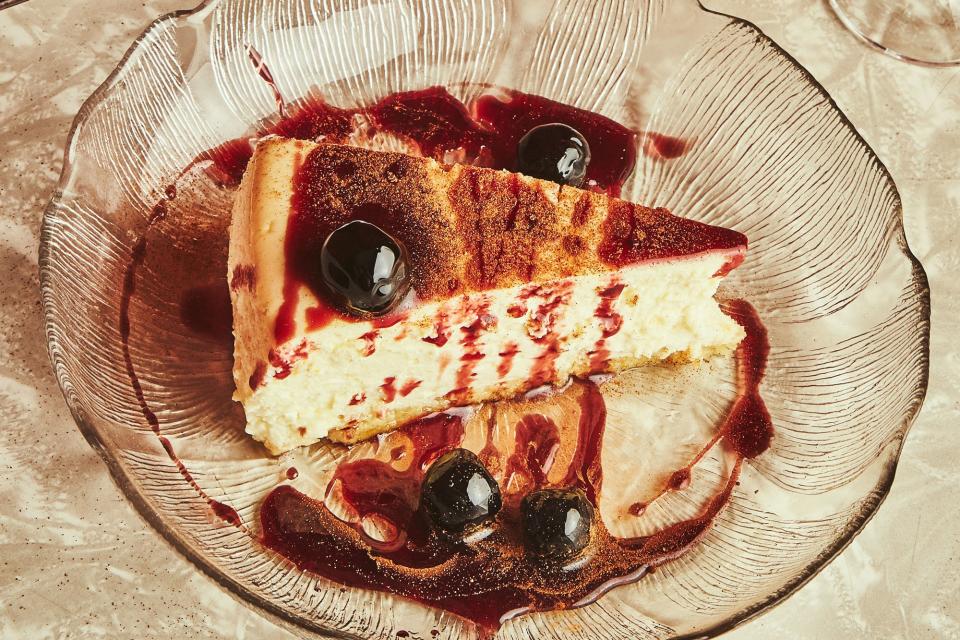How to Make Coconut Milk Whipped Cream, the Better Dairy-Free Dessert Topping
“I love the taste of sweet air!” said no one, ever. But there we go, dolloping bland white clouds of whipped cream or nondairy topping on our pies every Thanksgiving. Our desserts deserve better—we deserve better.
Maybe folks who avoid dairy have been keeping it a secret from the rest of us, but I’m spilling the tea: I think coconut milk whipped cream is actually better-tasting than the lactose-laced stuff. It’s silkier and more complex in flavor, adding a coconut dimension that makes every slice of pie tastier.
Making coconut milk whipped cream is easy, but there are a few ways to set yourself up for success.
We know you just got here because you're in the middle of making a pie and Google told you we could help, so we'll keep this short: Here are all of your Thanksgiving pie questions, answered.
Buy full-fat coconut milk
First things first, you need the right type of coconut milk—I’m talking canned and full fat. No thin coconut milk drinks that come in a carton. No cans that are labeled “light” or “low-fat.” Just like when you’re working with dairy, you need a high fat content for your coconut milk to emulsify and become frothy during the whipping process.
Not all full-fat coconut milks are created equal, though. Look at the ingredient list and choose a brand with minimal stabilizers (or none at all), since the stabilizers will inhibit separation—and in the case of coconut milk whipped cream, you want separation. Technically, you could use a can of coconut cream—it’ll contain more cream and less water, but many brands of coconut cream are loaded with stabilizers and additional ingredients. Avoid “cream of coconut” at all costs.
Coconut milk brands vary, but I’ve had success making whipped cream with Whole Foods 365 Everyday Value Organic Coconut Milk and Thai Kitchen Coconut Milk. One 14-ounce can yields three to four servings, so be sure to grab additional cans if you’re serving a crowd.
Chill overnight
Before opening the can, put it in the fridge overnight—or longer. Your goal is for the dense coconut cream to solidify and separate from the liquid coconut water. Like butter, coconut milk is full of saturated fat, so it solidifies when it’s chilled. Note: a few hours isn’t going to be long enough for the coconut milk to solidify. I learned this the hard way. Don’t be like me.
While you’re at it, pop your mixing bowl into the fridge to chill down, too.
Scoop out the solids
Once you’ve properly chilled the can, you can open it up to see the thick, solid coconut cream at the top. Use a metal spoon to carefully scoop it out, into your chilled mixing bowl (leaving the liquid at the bottom of the can behind). You won’t use the liquid for your whipped cream, but you should save it for other recipes—I love swirling it into smoothies.
Whip it and serve
At this point, you’ll move ahead the same way you would with dairy. Using an electric mixer, whip the cream on high speed until it’s light and fluffy and holds soft peaks. We wouldn’t recommend whipping by hand, because coconut cream’s consistency is so firm and dense. To accentuate the coconut flavor, mix in a teaspoon of vanilla and a tablespoon of sweetener, such as maple syrup, honey, or sugar. Then serve your coconut whipped cream immediately. Or, you know, eat it with a spoon so there isn’t any left for the pie.
Haven't chosen a pie yet? Here are some ideas...
Our 62 Best Thanksgiving Pie Recipes: Apple, Pumpkin, Pecan, and Beyond

Originally Appeared on Epicurious


